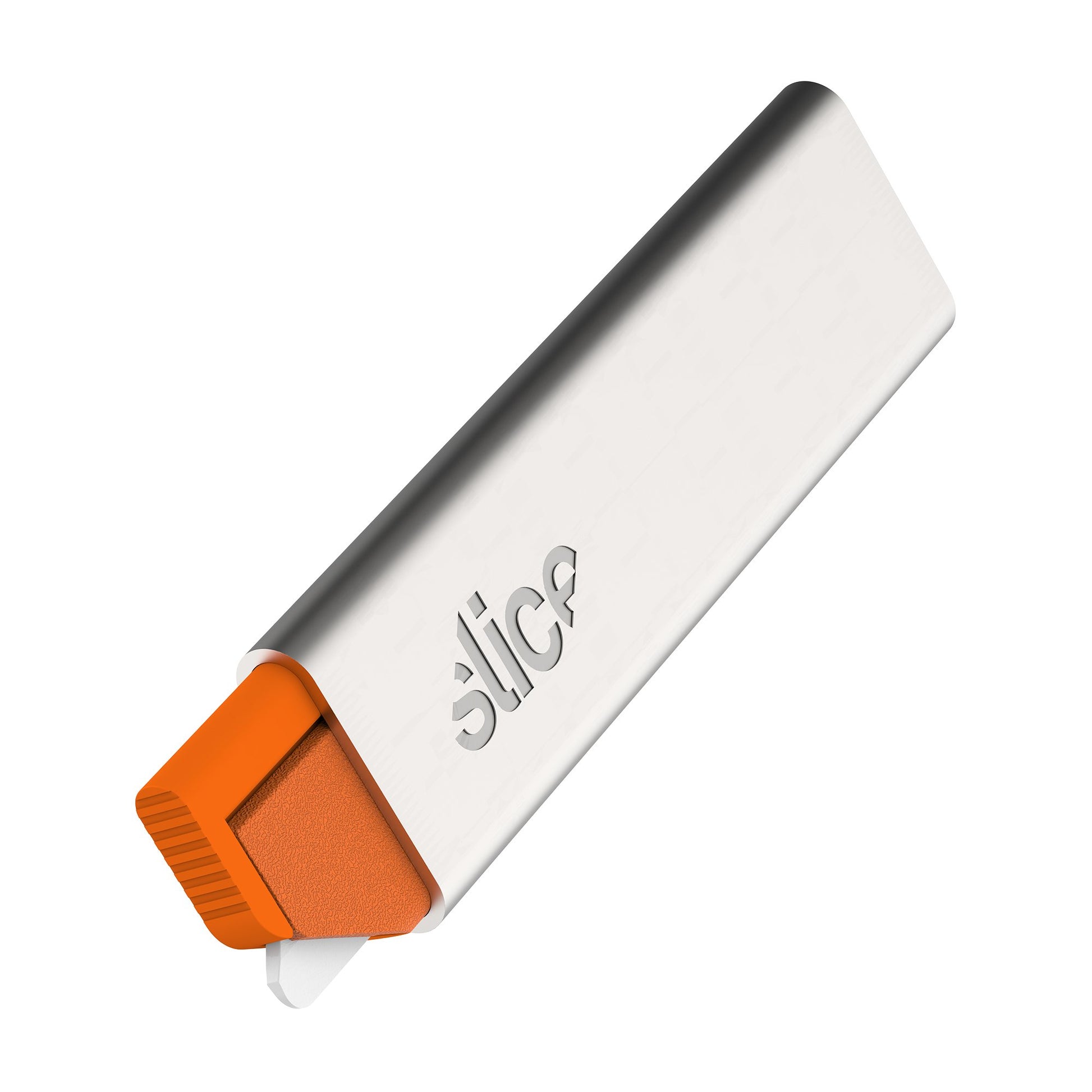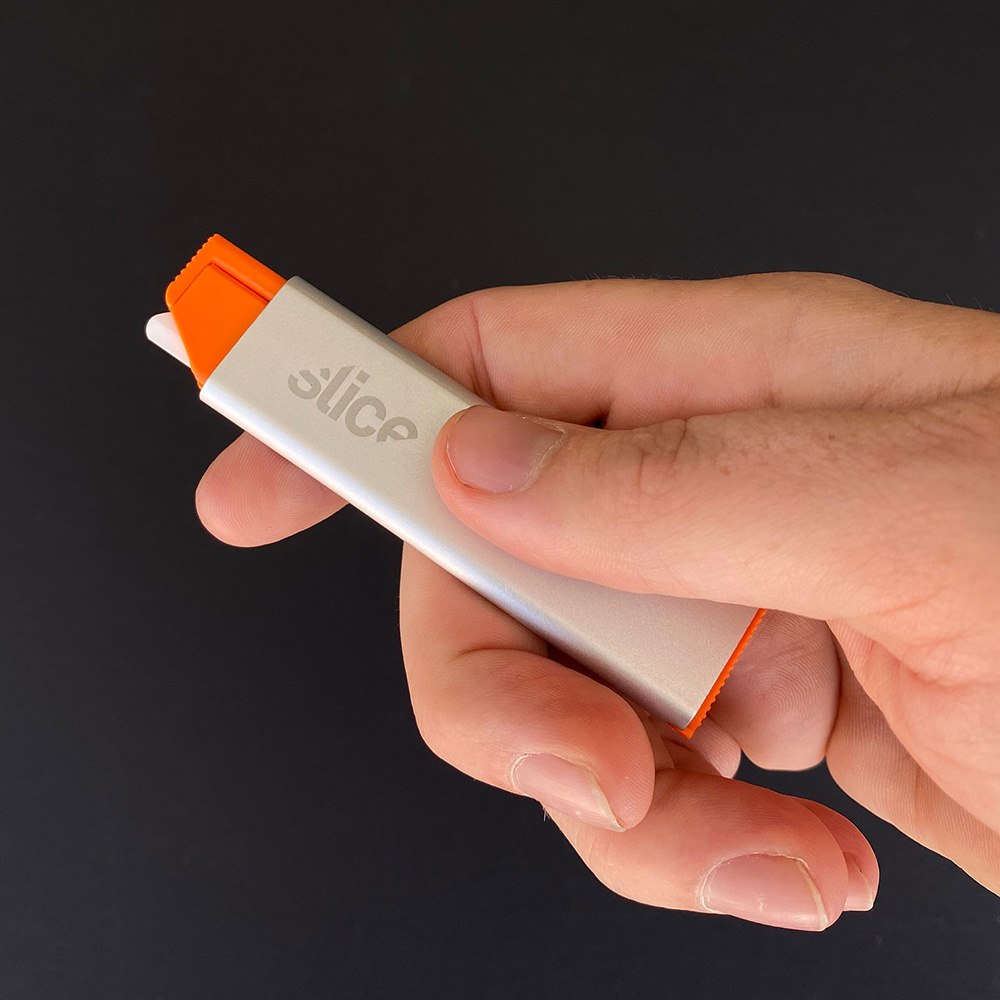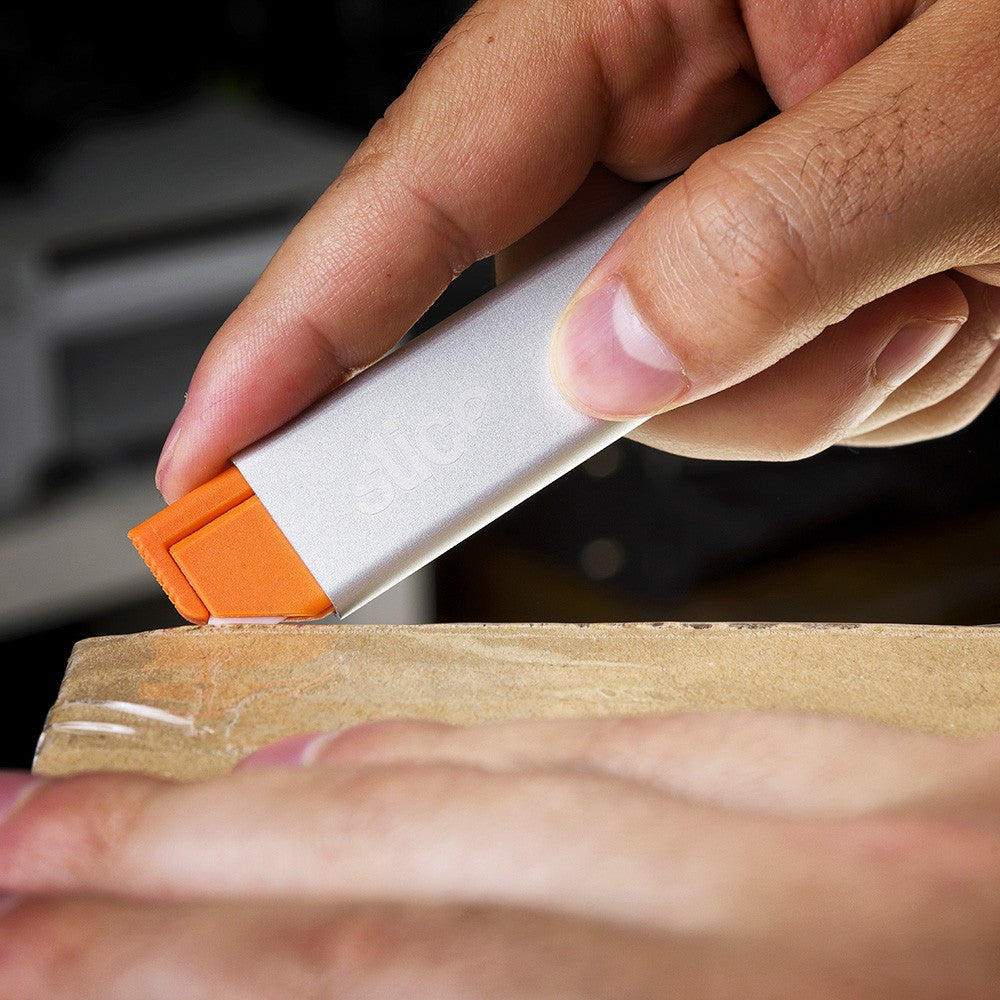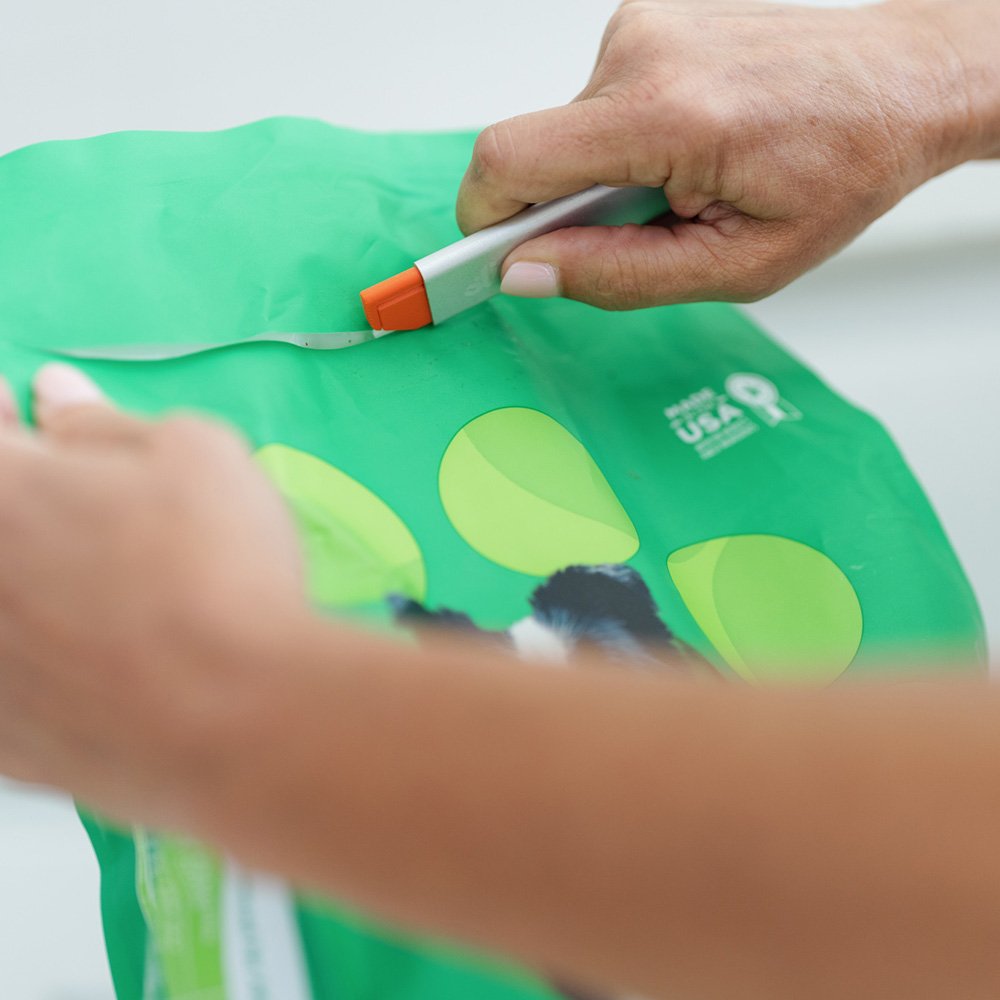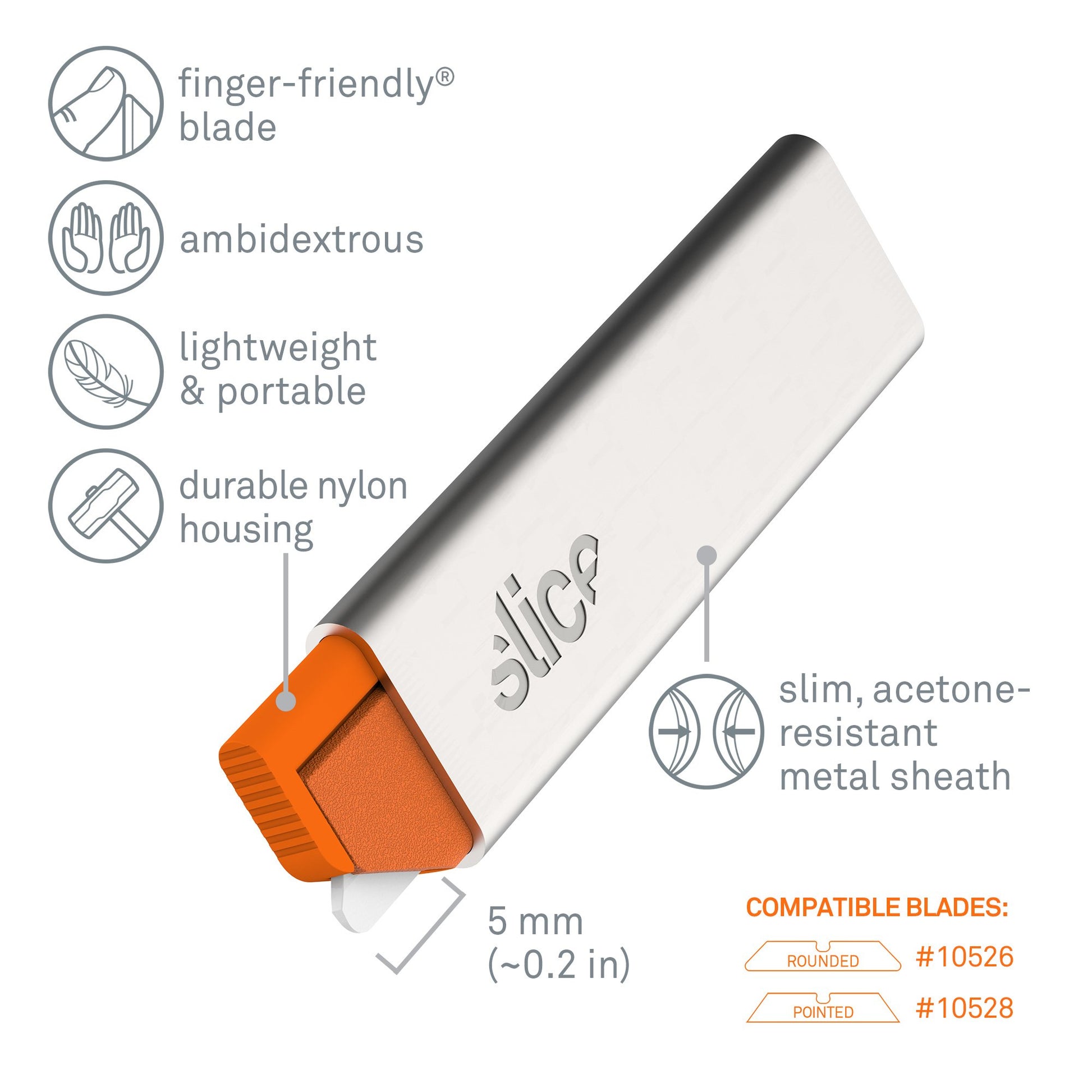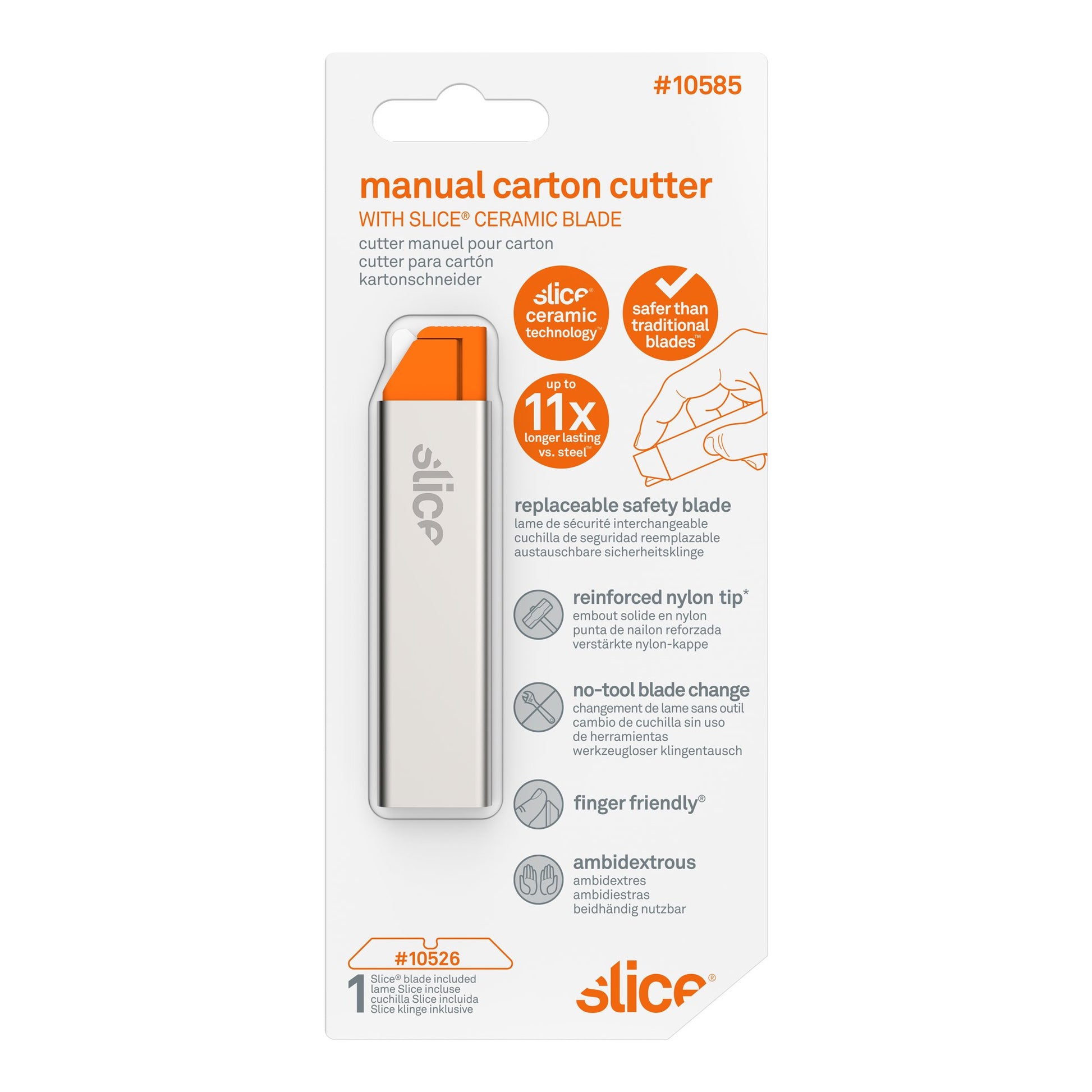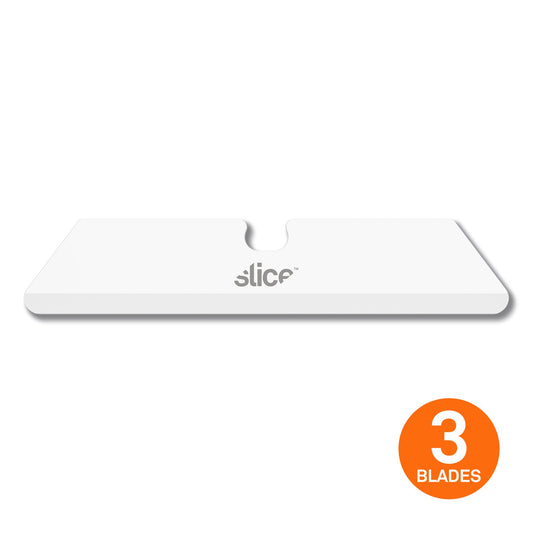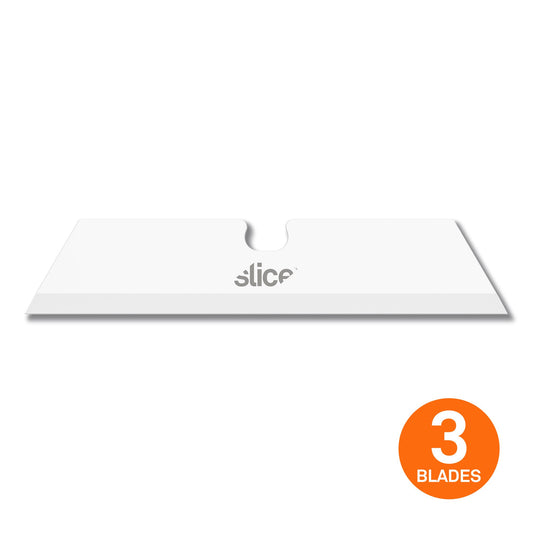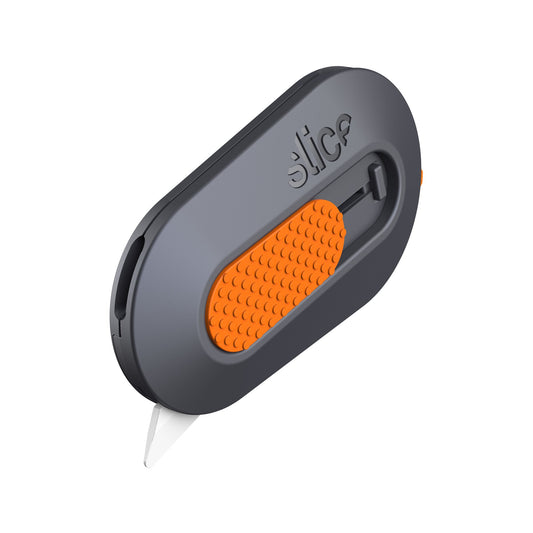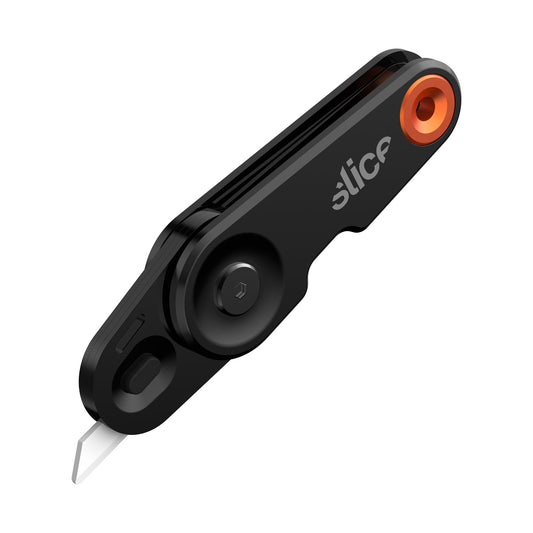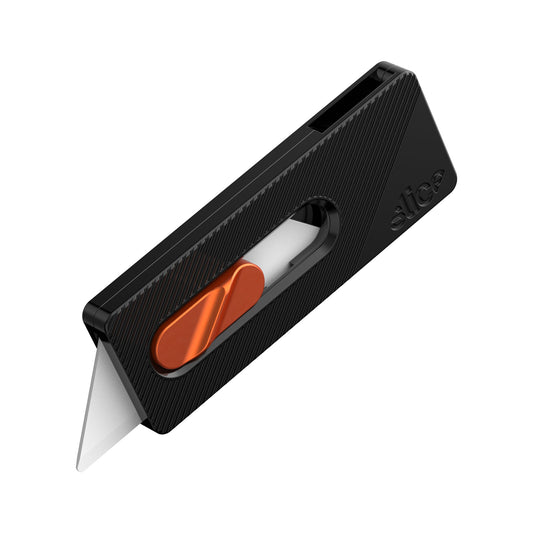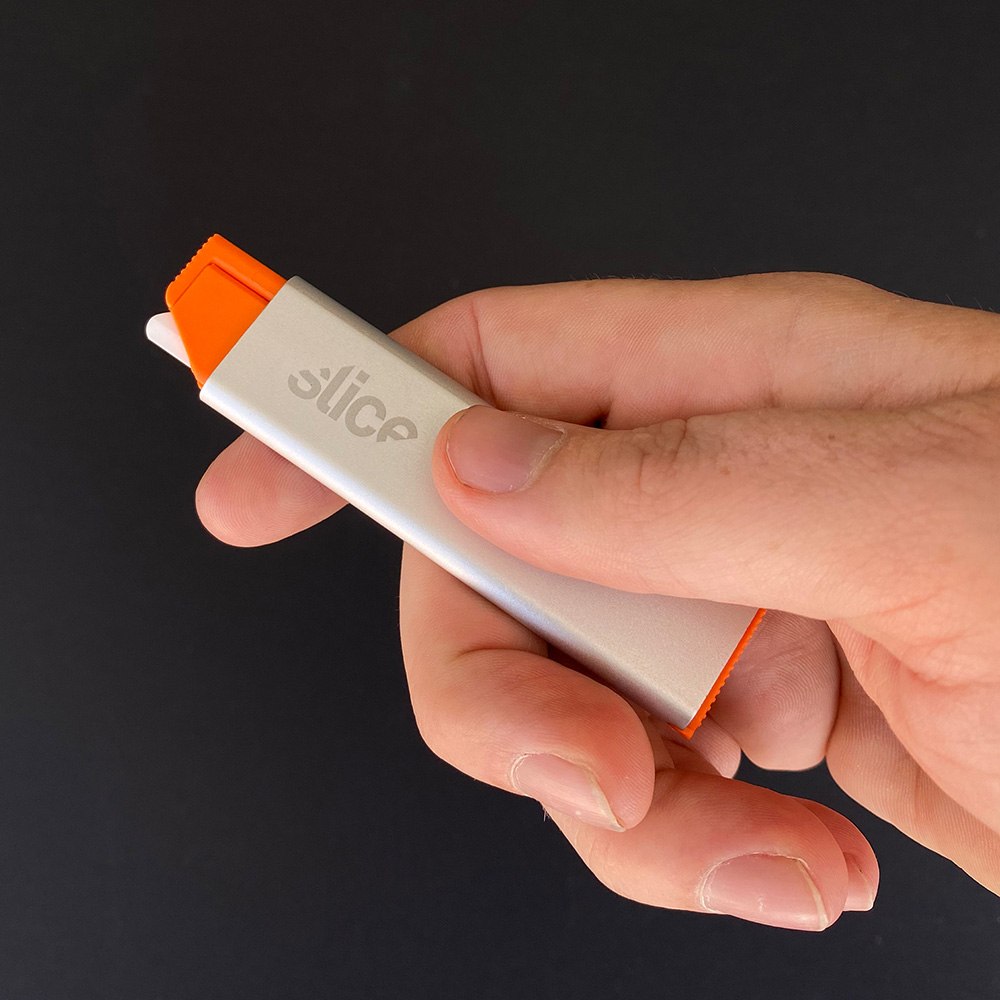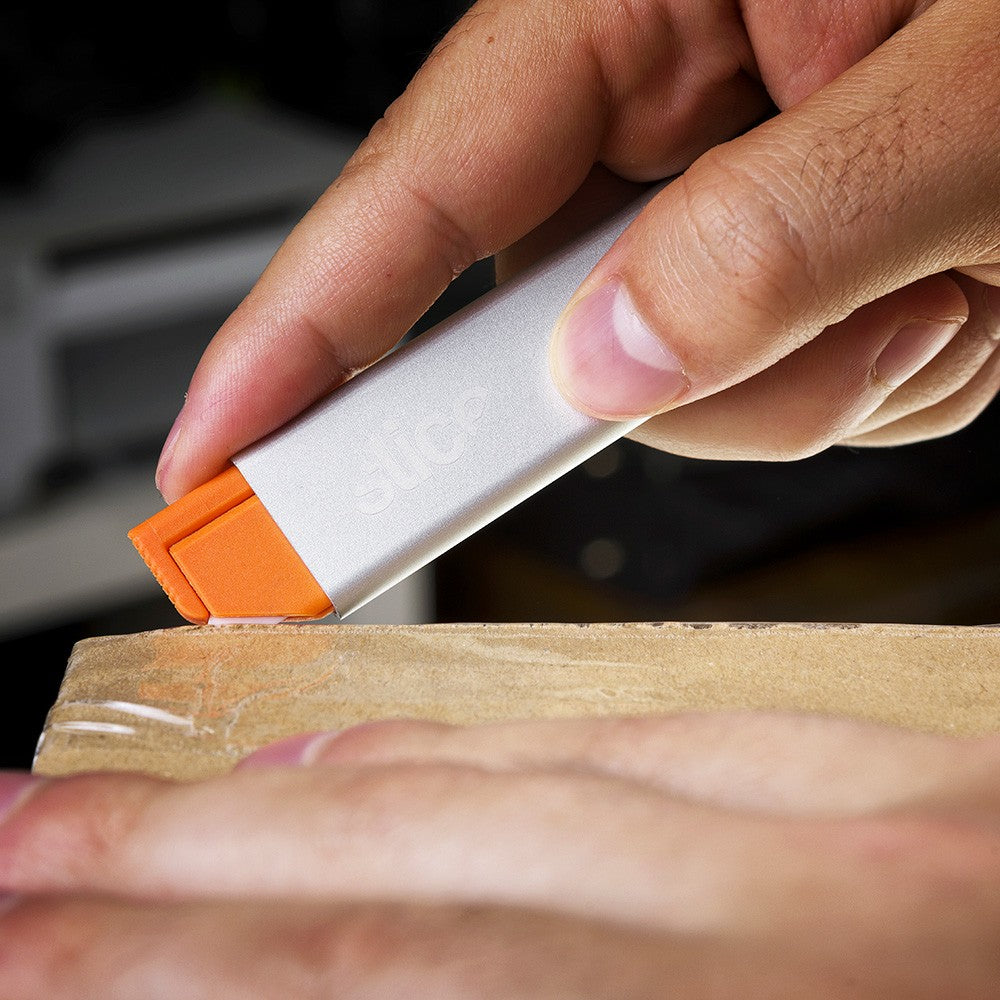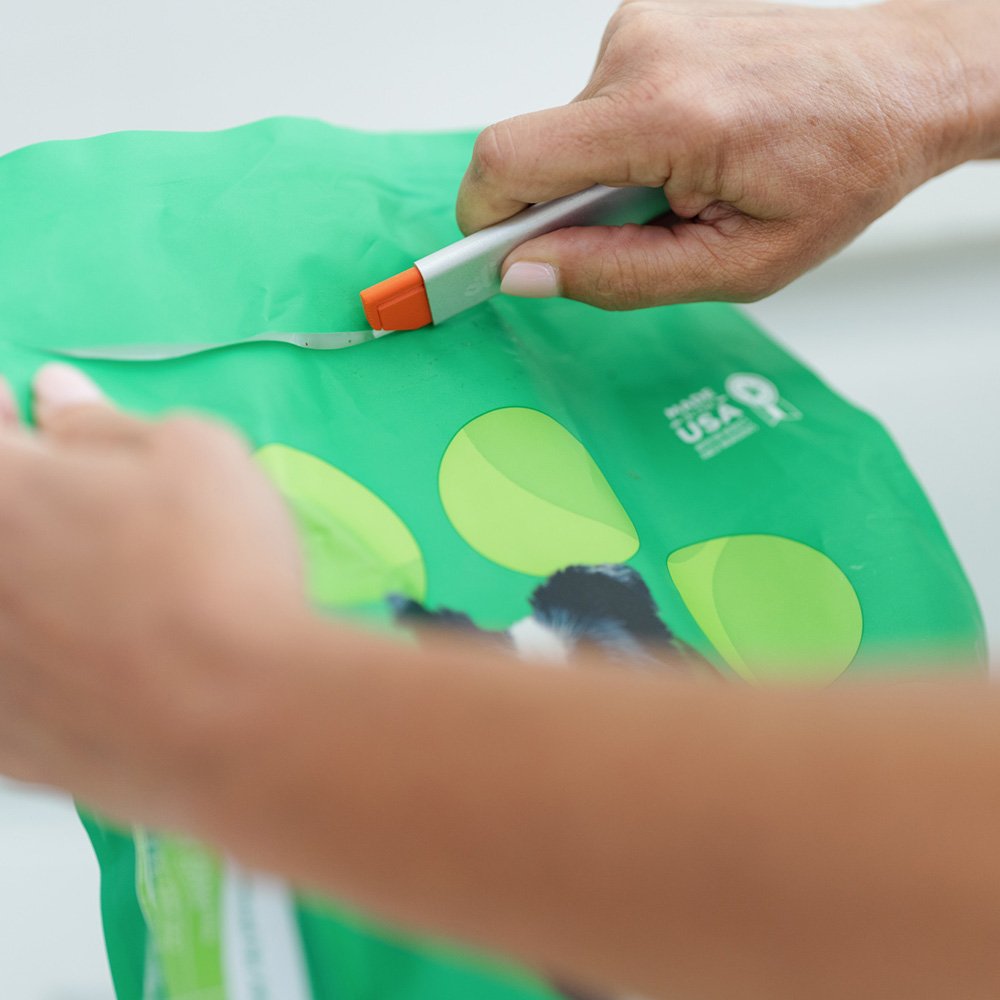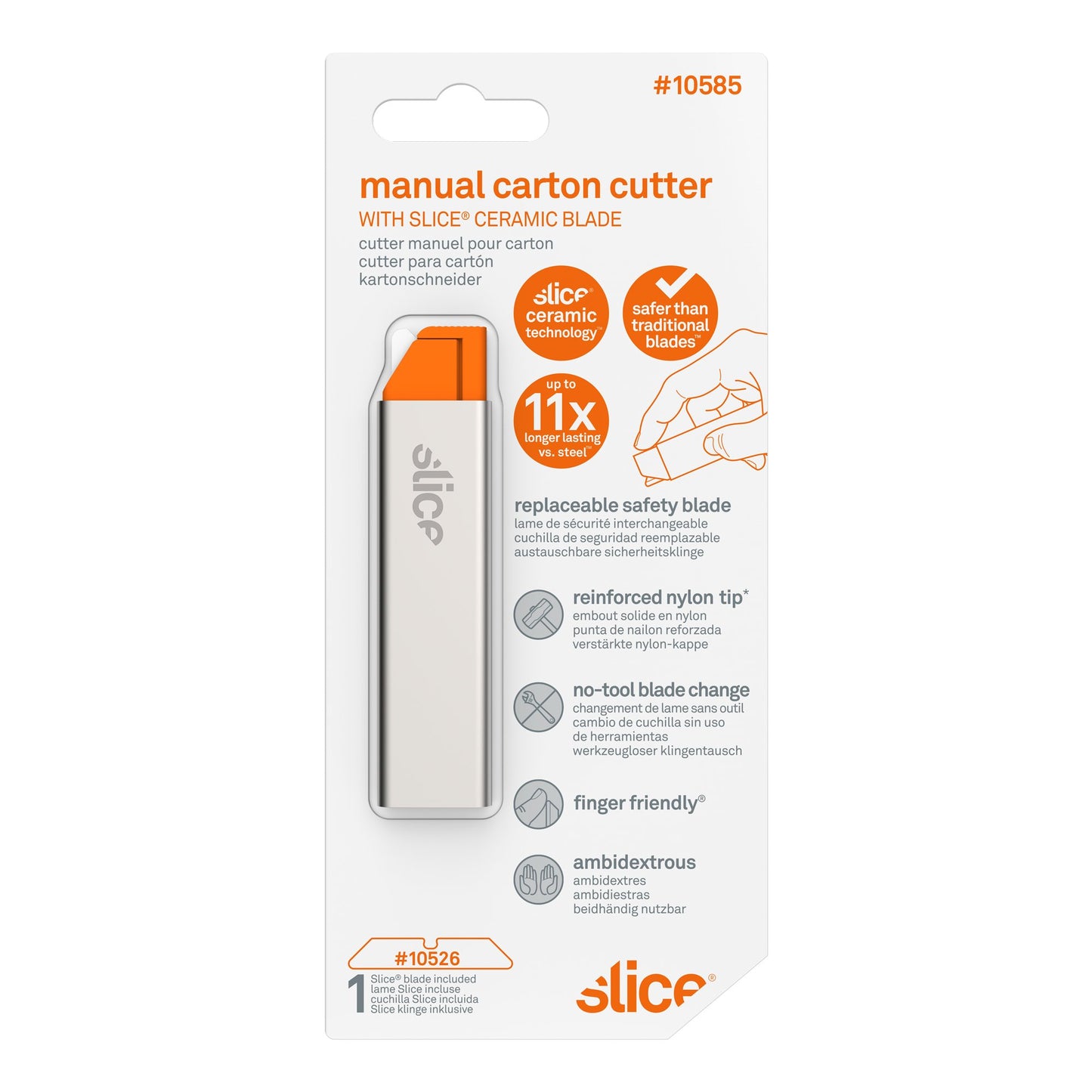Cutter manuel pour carton
SKU #10585
Le Cutter manuel pour carton Slice® 10585 est un ajout astucieux à notre gamme de couteaux de sécurité. Comme son nom l'indique, cet outil - par la longueur de lame exposée et son angle - est idéal pour découper du carton plat et les cartons ondulés minces. Ce cutter manuel pour carton Slice (manuel) expose juste assez de longueur de lame pour pouvoir couper facilement le carton sans risquer d'endommager le contenu de l'emballage. Faites glisser la gaine de protection en métal pour recouvrir ou exposer la lame selon vos besoins. Le cutter 10585 est livré avec la lame de couteau multiusage 10526 à bout arrondi. Comme tous les outils Slice, la lame est dotée d'un tranchant finger-friendly®, elle est chimiquement inerte, ne rouille pas et dure jusqu'à 11 fois plus longtemps qu'une lame en métal comparable.
- Type de lame incluse : bout arrondi
- Manche en nylon durable avec une gaine en métal résistant à l'acétone
- Ambidextre
- Lames compatibles : 10526, 10528
- Inclut 1 lame en céramique Slice® au bout arrondi
- Tranchant Finger-friendly® qui reste affûté 11 fois plus longtemps
- Lame chimiquement inerte, qui ne rouille pas
- Ne produit pas d’étincelles, non-conductrice, non-magnétique
- Lame sans revêtement huileux ni lubrifiant
- Réduit les blessures, réduit les coûts
- Changement de lame sans outil
- Réf. 10585
Great for:
- Opening boxes, packaging, and shrink wrap
- Slicing cardstock
- Removing coupons from cereal boxes
Product Specifications
Product Specifications
Cutting Depth:
Material: GFN, aluminum, zirconium oxide
Dimensions: L x W x H
Weight: 0.07 lbWhat Customers Are Saying
-
 I buy these knives for my inspection crew at work. Very durable and cut through cardboard easily. I liked them so much I bought a few for home as well.
I buy these knives for my inspection crew at work. Very durable and cut through cardboard easily. I liked them so much I bought a few for home as well.
Charles Wiggins
-
 This thing is a blast. It’s one of those things that feels good when you use it. It glides through the tape on my packages. I love that sensation. I also use it on my small envelopes, vitamin difficult bottles and large envelope packages.
This thing is a blast. It’s one of those things that feels good when you use it. It glides through the tape on my packages. I love that sensation. I also use it on my small envelopes, vitamin difficult bottles and large envelope packages.
Joan
-
 I love this. It’s small & so easy to use. I can’t believe how well it cuts open packages yet it doesn’t feel sharp to the touch. It’s awesome! I bought several & they make great stocking stuffers.
I love this. It’s small & so easy to use. I can’t believe how well it cuts open packages yet it doesn’t feel sharp to the touch. It’s awesome! I bought several & they make great stocking stuffers.
Sue Messing
Videos
-
Replacing Carton Cutter Blades
FAQ
What Is a Carton Cutter?
>While many people use utility knives for this purpose and handle designs vary, carton knives typically have a thin, flat rectangular handle with a sheath that slides over the housing to expose or protect the blade. Many use standard metal utility blades while others use (dangerous) snap-off metal blades.These tools are frequently smaller than standard utility cutters and fit easily in the palm of your hand.
How Are Slice Carton Cutters Safer?
How Do I Change the Blade in the Slice Carton Cutter?
Ensure that the new blade lines up with the notch in the housing and close the housing. Before you slide the metal sheath back on, check for the notch on the bottom of the sheath. Line up the blade with this notch and slide the housing back in. This will ensure that the stopper on the housing lines up with the notch on the sheath, limiting how far down the sheath can slide.

